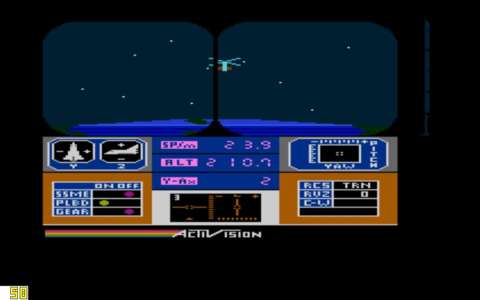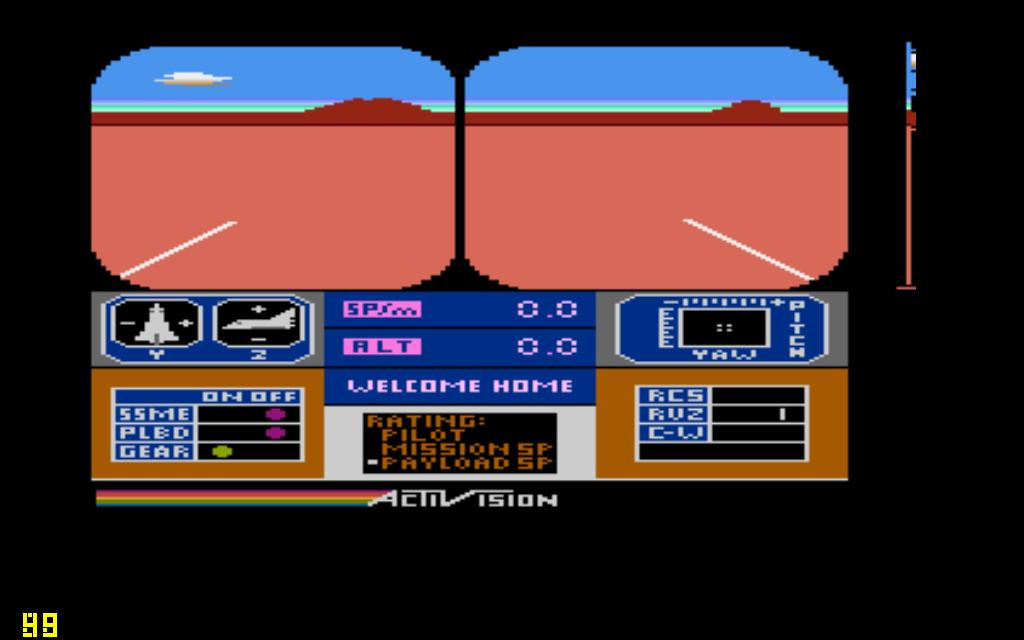Making any type of simulation games can be a daunting task as, not only the game has to be as close as the real thing, it also needs to be fun. Yet most fall down with the fun factor however fun doesn’t has to be retrigger happy, it just needs to be constantly engaging the player. Steve Kitchen has done just that with his first video game called Space Shuttle: A Journey into Space. Granted that most advertisements for this game states ‘This is no game’ however Steve has successfully captured the moments of controlling the Space Shuttle from the moment you take off to the moment you land – and let me tell you this is one hell of a ride which was also captivating.
As the title implies, you start off at Cape Kennedy Space Centre and you are in control of Space Shuttle Discovery 101st mission of the space transportation system. Your goal is to reach 210 nautical miles above Earth to rendezvous with the satellite then head safely back to Earth. You can opt to dock as many times with the satellite as possible however the more you dock, the more erratic the satellite gets. Once landed safely back to Earth, you will be given a ranking based on the amounts of successful dockings and on how effective you are. Do it extremely well, you will be granted a nice set of wings to show off displayed on the screen.

To do all of this requires absolute precision from take-off to landing. Deviate even the slightest will cost you a lot of fuel or in worst case, aborts the mission. Everything has its purpose and you’ll need to read the manual to understand each step along the way. There are some parts during your flight that you can ‘cheat’ (i.e. don’t follow directly from the manual) however it takes a lot of practice to get it right. One of them is, according to the manual, after each docking, you need to wait until you see a dramatic change in the x axis (i.e. the satellite screams ahead of you) before docking again. I say screw that and hit the Orbital Maneuvering System (OMS) and chase after the satellite like there’s no tomorrow. Heck, this saves time as time forms part of the final score. There are others of course however I leave then up to you to discover.
Visually the game does looks impressive as it’s viewed from a first person perspective. Not many games for its time can do this well enough as the colour palette is vibrant, nice visuals that even displays ionisation cone that even knock out the signals for a small while. Basically the top half is your window and the bottom half is where all your readouts and important information lies. As much as you want to view the pretty stars from the window, your eyes will be mainly concentrated on the readouts otherwise you will most likely be treated with a sharp buzzing noise indicating something is wrong. If not corrected, it will be a short trip with a nice error code displayed. Deciphering error codes are fully printed in the manual.

Make no mistake that Space Shuttle: A Journey into Space is pretty much a journey from launch to rendezvous to landing. All requires absolute precision therefore there won’t be a moment of sitting back and let the world spin around. Thankfully there are three levels of difficulty, the easiest is basically the computer does everything for you. The second you control the space shuttle and any errors won’t cause the mission abort. The third is the right stuff – that is no room for errors.
The best rank, the Space Shuttle Commander, I only achieved once as it does require some luck as the satellite, from the forth docking onwards, goes on a ballistic radical path. Basically the satellite alters its path every two seconds which may not sound a lot however considering you need to lock on the satellite for two seconds, you can see it needs pin point timing otherwise say goodbye to the satellite and start all over again thus wasting time and fuel. A damn fine product for which obviously a lot of love and care was poured in by Steve Kitchen (as he even went as far spending time with NASA) and considering all of this fit in an 8KB, it’s a pretty marvellous feat.

